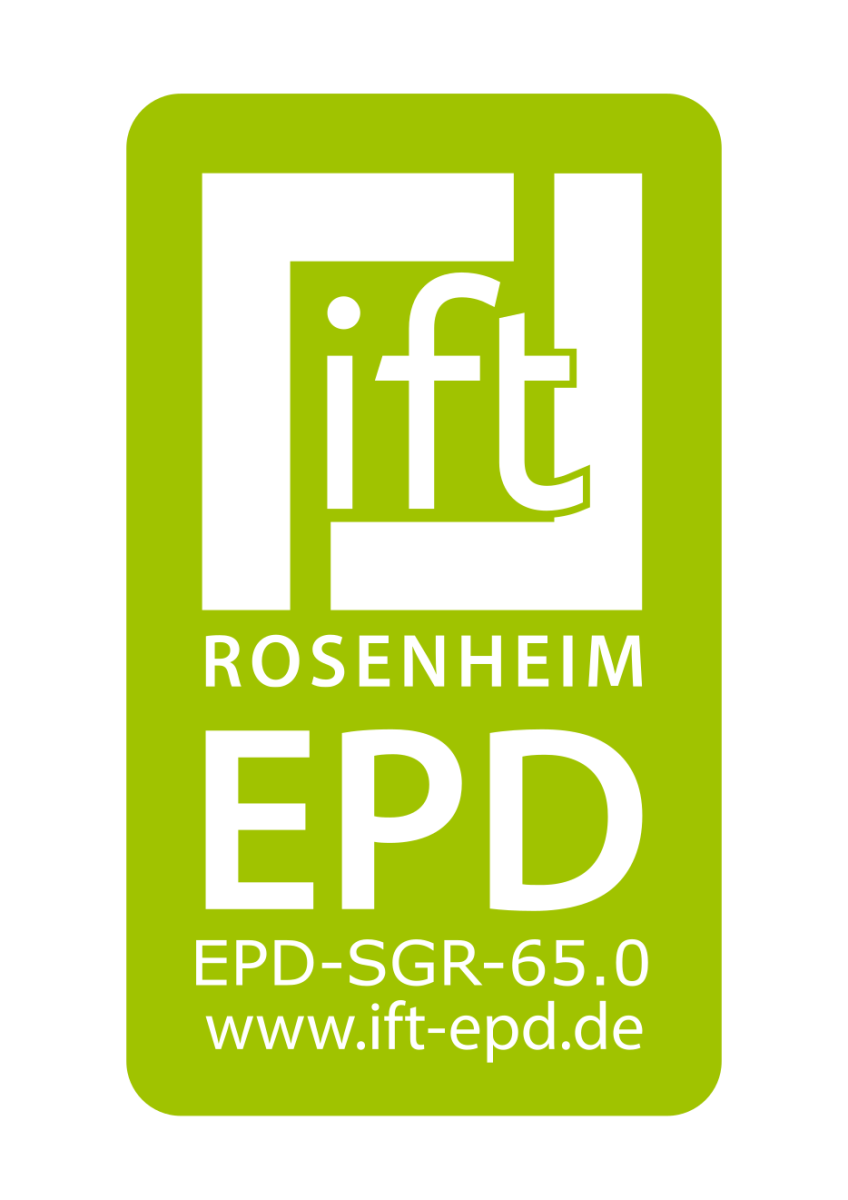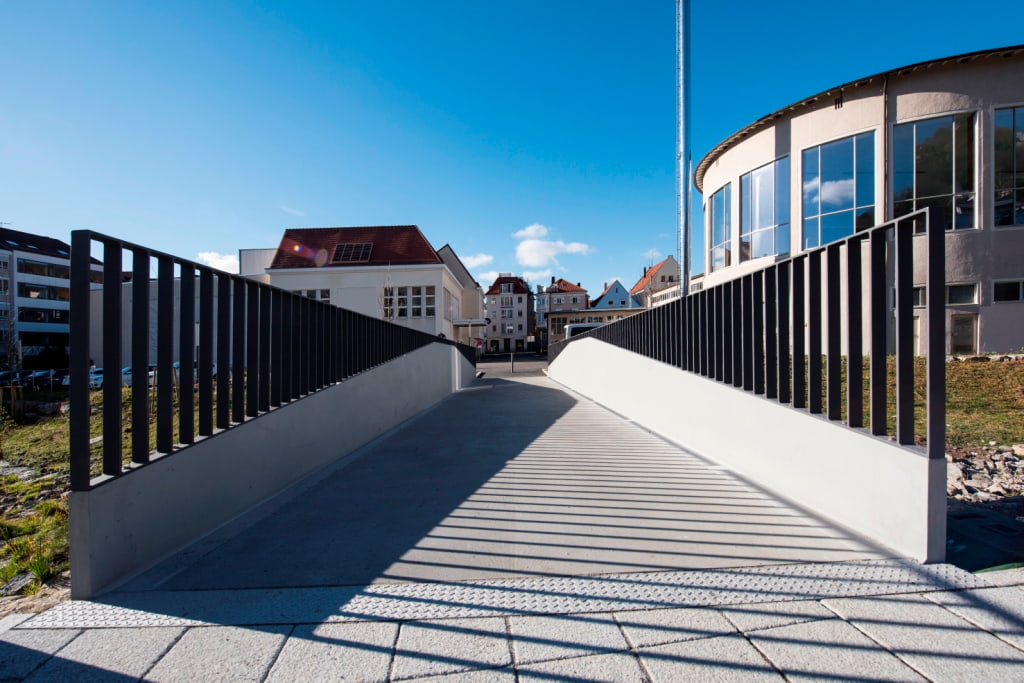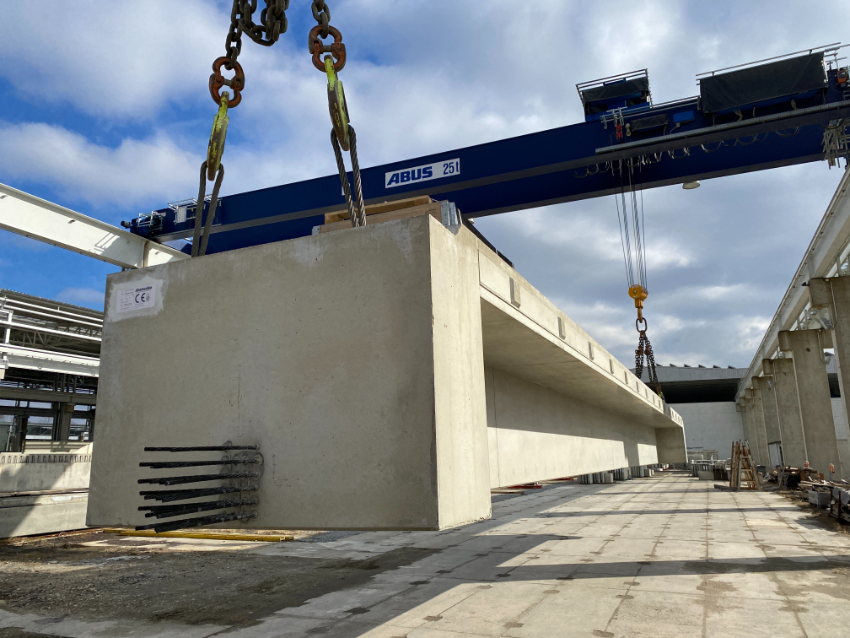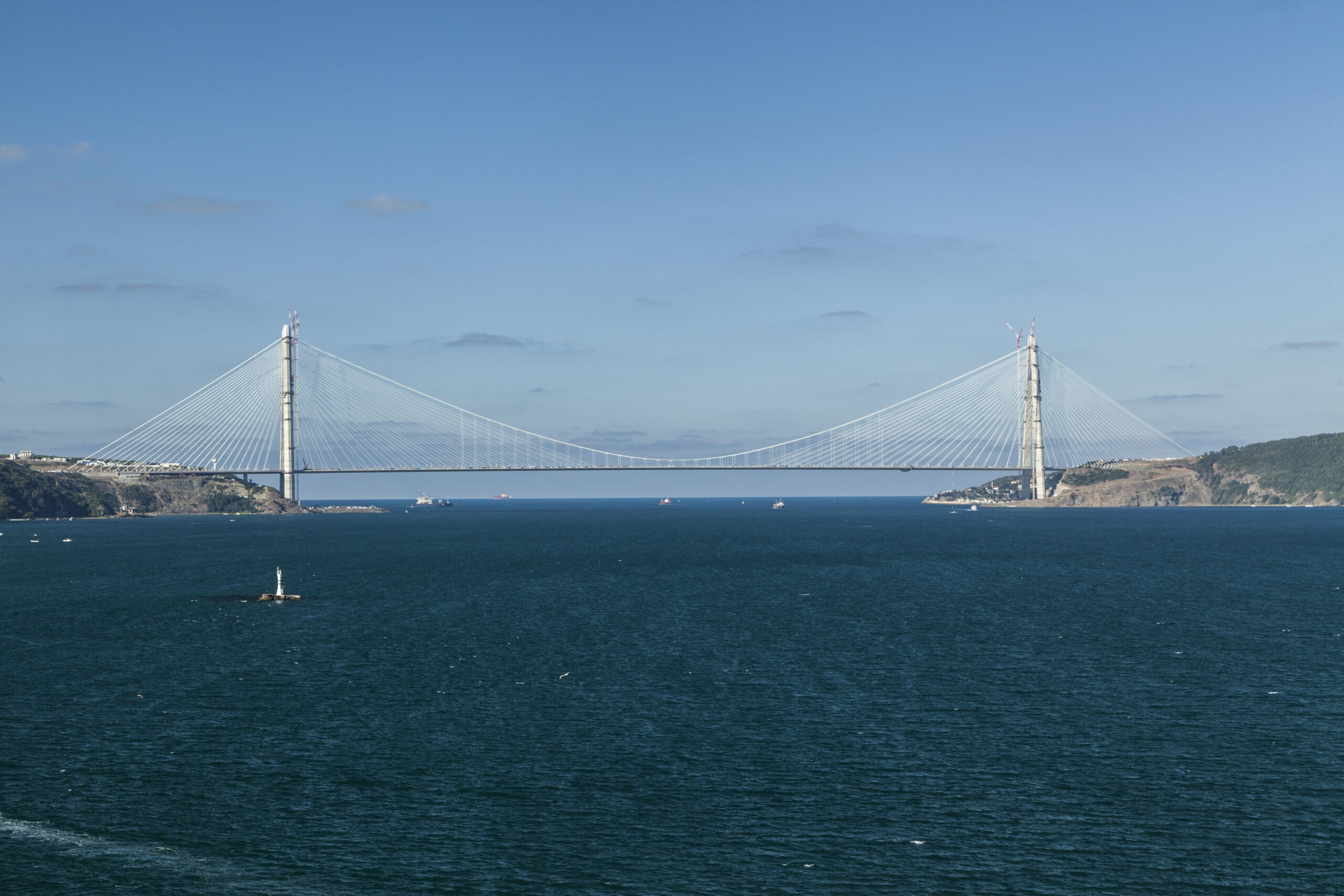
GRID carbon
High tensile strength.
Minimal concrete coverage.
Our carbon grid reinforcement solidian GRID carbon has a tensile strength several times higher than classic steel reinforcement meshes. The carbon fiber composite reinforcement does not corrode and is extremely lightweight. These positive properties lead in part to considerable cost savings in construction, maintenance and repair. The lower material consumption (up to 50 % less water, aggregates and cement) when using our carbon reinforcement grid, as well as the great potential for saving on transportation costs and CO2 emissions, make it a truly sustainable solution. With solidian GRID, concrete goes from gray to green!
Product Features
- Slimmer components: Enables slender construction with unique aesthetic design possibilities.
- Lower transportation and storage costs: The lightweight reinforcement itself can be transported in rolls and enables lighter, thinner precast concrete elements.
- Deflection: No higher deflection of the components compared to steel due to a similar modulus of elasticity.
- Resource efficiency: Lower consumption of concrete and therefore less use of water, aggregates and cement.
- Safer and easier handling: The lower weight ensures safer and healthier handling during processing.
- Minimal disruption to operations: Less disruption to operations due to less maintenance and repair work.
These properties make our non-metallic reinforcement the ideal choice for modern, sustainable construction projects.
Technical information
- Composite material made of high-performance carbon fibers
- Also as grid reinforcement with building authority approval
- Characteristic short-term tensile strength: ≥ 2600 N/mm²
- Available in various load levels
- Standard dimensions 6.0 x 2.30 m and available in rolls (<3.0 m width)
 For our solidian carbon grid reinforcements, we have had environmentally relevant properties determined by neutral and objective data in an Environmental Product Declaration EPD. This information is available here and in the download area.
For our solidian carbon grid reinforcements, we have had environmentally relevant properties determined by neutral and objective data in an Environmental Product Declaration EPD. This information is available here and in the download area.
reinforcements for the future generations
Reference project
Product Applications
- Prefabricated parts in general, e.g. balcony slabs
- Facades, e.g. exposed concrete facades, sandwich walls, ventilated facades
- Hydraulic structures, maritime structures, swimming pools
- Tunnel structures and bridge superstructures
- Infrastructure, e.g. sewers, ram protection walls
- Measures to strengthen load-bearing structures, e.g. earthquake reinforcement, floor slabs
- Concrete components (e.g. foundations) for components for the generation, transmission and end use of electricity
- Repair measures for e.g. parking garage slabs, bridge superstructures, floor slabs
- Product Performance & Applications
- Certification & Compliance
- Installation & Handling
- Are your meshes suitable for high-load areas?
- Can your reinforcements be used in chemically aggressive environments like parking garages or industrial floors?
- Why is CE certification important?
- Which products are CE-certified for screed reinforcement?
- Is special equipment needed to install these reinforcements?
- Can your meshes be cut on site?
-
solidian Primafloor 130, 145, 340
-
solidian Primafloor C220 and B215
-
solidian ANTICRACK Q43/Q47/Q85/Q95
-
solidian Briksy Carbon
frequently asked questions
Absolutely. Both structural solutions (e.g. solidian ANTICRACK) and screed meshes (e.g. solidian Primafloor) are tested for mechanical performance and crack control under dynamic and static loads.
Yes. Products like solidian ANTICRACK and REMAT are engineered for high-performance use, including resistance to chemicals, de-icing salts, and water ingress. They are ideal for parking decks, warehouses, and production halls.
CE marking ensures compliance with European safety, health, and environmental protection standards. It also simplifies specification in public or regulated construction projects.
The CE-certified group includes:
This covers most standard applications on the market.




